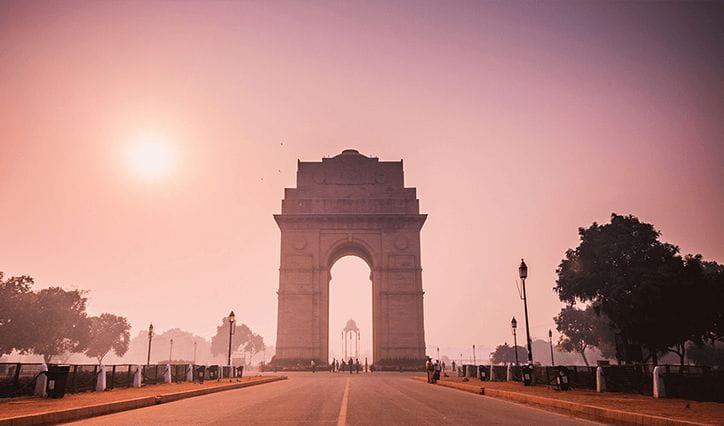


Explore the magnificent architectural and design features of Sir Edward Lutyens’ New Delhi landscape, and be regaled by stories behind making of new city. Discover the secrets of the fabulous lives of the British stationed here, and the Indian nobility living in grandeur in Delhi at that time.From the iconic memorial arch of India gate of Rashtrapati Bhawan, along with Kartavaypath (Rajpath) and more. Let us make you a fascinating walk through New Delhi’s 20th Century history. The India Gate or All India War Memorial on the Kartavayapath (Rajpath) is a memorial to commemorate the individed Biritsh Indian Army who died in the World War I (1914-21). Designed by Sir Edwin Lutyens and built between 1917 to 1931 is 42 meter tall bears the names of 13,218 martyrs. The Rashrapati Bhawan or President House is located towards the western end of Kartavayapath (Rajpath). Under Lutyens, it was designed as the British Viceroy’s residence. The expert shall point out various makers of syncretic architecture that are prominent on the spectacular red and buff sandstone façade of this heritage building. With 340 well decorated rooms, a durbar hall, Ashoka hall, State dining room and large number of guest Suites and the private apartments, the President’s Estate truly is the magnum opus of Lutyens’ New Delhi saga. The four-storeyed Secretariat, located at a distance of 400 meters from Rashtrapati Bhawan, houses important ministries of Government of India and is divided into two block – North and South. It was designed by Herbert Baker to accommodate 4,000 rooms. The premises included formal gardens with water fountains, pillars and porticos with vaulted ceilings. Classical in style, each block by an imposing central baroque dome.
Booking Notice : 48 hours prior
Accompanied by : Hotel guide
Places to visit : President's Palace, Parliament House & India Gate.
| Phone No. | |
|---|---|
| concierge.tond@oberoihotels.com |
+91-70110 75225
|